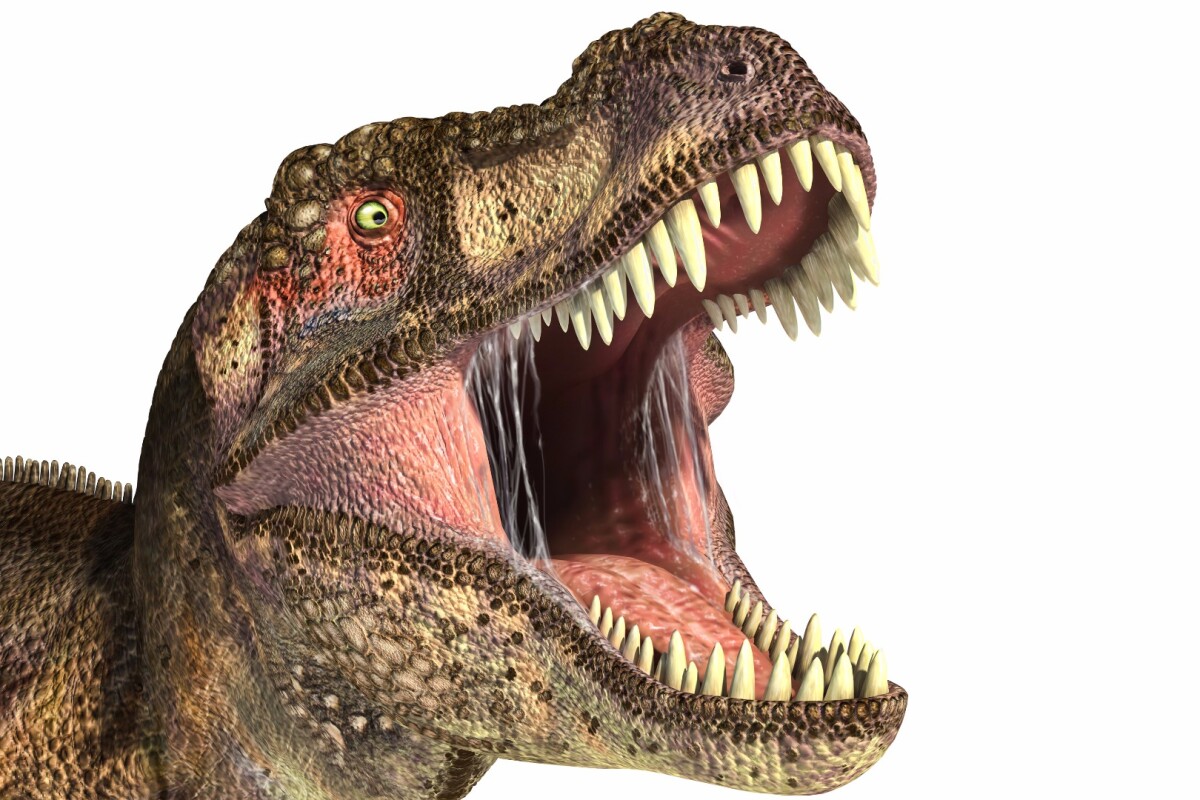Few animals capture the imagination quite like the Tyrannosaurus rex – even if it wasn't the biggest predator to ever stalk the Earth, and it may have sounded more bird than beast. But a new study shows that the King may still deserve its crown, thanks to a terrifying set of jaws that could deliver one of the strongest bites of any land animal in history. It's an ability that T-rex probably used to pulverize and eat the bones of its unfortunate prey.
A group of scientists from Florida State University began by studying the bite force of crocodiles and alligators, which are at the top of today's list of animals you don't want to find yourself between the jaws of. In 2012, the team found that a saltwater crocodile packed a bite of 3,700 pound-force (16,460 newtons), By comparison, a human vigorously tearing into a steak tops out at around 200 lbf (890 N).

Using the jaw musculature of crocodiles as a starting point, the Florida State researchers compared the reptilian figures with those of birds, a closer modern relative of dinosaurs, to create a model for the biting power of a T-rex. The dinosaur, they found, could chow down with about 8,000 lbf (35,586 N), more than twice the force of a saltwater croc. But the team points out that in practical terms, there's more to the story than that one number.
"Having high bite force doesn't necessarily mean an animal can puncture hide or pulverize bone, tooth pressure is the biomechanically more relevant parameter," says Gregory Erickson, co-author of the study. "It is like assuming a 600 horsepower engine guarantees speed. In a Ferrari, sure, but not for a dump truck."
Tooth pressure is determined by how the shape of the teeth focuses the pressure into a smaller point, and the T-rex's long, cone-shaped chompers were perfect for piercing flesh and shattering bone. Channeling the force, a Tyrannosaurus bite could impart as much as 431,000 pounds per square inch (psi), which helped the animal pulverize the bones of its prey to give it a nutritional advantage over other predators of its day. To compare, saltwater crocs were measured at 360,000 psi.
"It was this bone-crunching acumen that helped T-rex to more fully exploit the carcasses of large horned-dinosaurs and duck-billed hadrosaurids whose bones, rich in mineral salts and marrow, were unavailable to smaller, less equipped carnivorous dinosaurs," says Paul Gignac, co-author of the study.

This feeding style is very different from modern crocodiles, which bite to kill before swallowing their meals mostly whole. Due to their tooth structure, as well as bite marks found on Triceratops bones, the researchers suggest that the T-rex ate with a biting and chewing pattern, in the style of modern mammals like hyenas and wolves. That means this feeding pattern arose earlier than previously thought.
The research was published in the journal Scientific Reports.
Source: Florida State University






